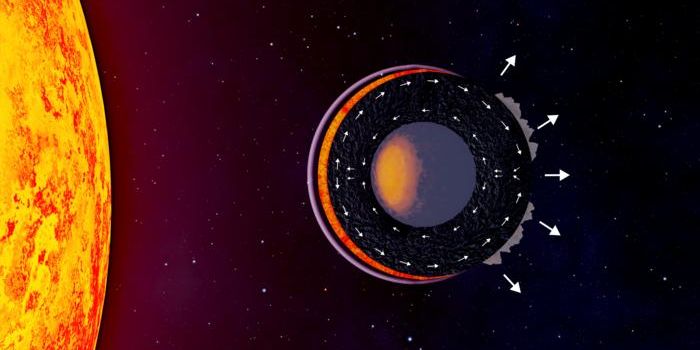Understanding Exactly Where Our Moon Came From
Billions and billions of years ago, the planet Earth was not like it is today. At one point, Earth did not even have a Moon to speak of. It wasn’t until something big happened that the Moon and modern-day Earth would be born.

In a study published in Nature, a team led by Kun Wang delve into the possibility that an incredibly large impact created our Moon and look into the Moon’s isotopic composition.
Their findings reveal that such an impact may have been far more powerful than originally thought, having nearly vaporized part or most of the planet. The new theory differs from existing theories that when something collided with the Earth at an angle, it rebounded to become stuck in the planet’s orbit and became the Moon we know today.
In such a large impact, most of the Earth would have probably been annihilated into a superheated cloud of molten rock. Some of it would have been so hot it became gaseous.
With data collected from NASA’s Apollo missions, which indicate the Moon has nearly the same kinds of mineral composition that our planet does, Wang and the rest of the team were on a mission to figure out why they were so similar, but with one major difference.
That difference is in the rocks on the Moon. The heavy presence of an isotope known as potassium-38 exists that is not found on Earth. This may have come from the alien rock that slammed into the primordial Earth.
This would suggest that at some point, part of (or all of) our planet was blown into space due to the collision, and goes against the theory that some kind of alien rock that collided with Earth was re-captured in orbit around the planet.
In one of two likely scenarios, either the Earth was vaporized in the collision and gravity brought everything back together inside of a silicate vapor bubble to become what it is now, or there was some kind of exchange inside of that silicate vapor that was created from the super-hot materials spewed into space from the collision.

Image Credit: Kun Wang
Obviously, that potassium-38 came from somewhere, and it’s not as abundant on Earth as it is on the Moon, so something else must have put it all there.
The stories behind how our Moon was created seem to get more and more violent as days pass, but the search to figure out how we all got here is never ending and we can’t leave any rocks unturned if we are to learn how the Earth and the rest of the solar system came to be formed.
Source: Washington University in St. Louis via Astronomy








